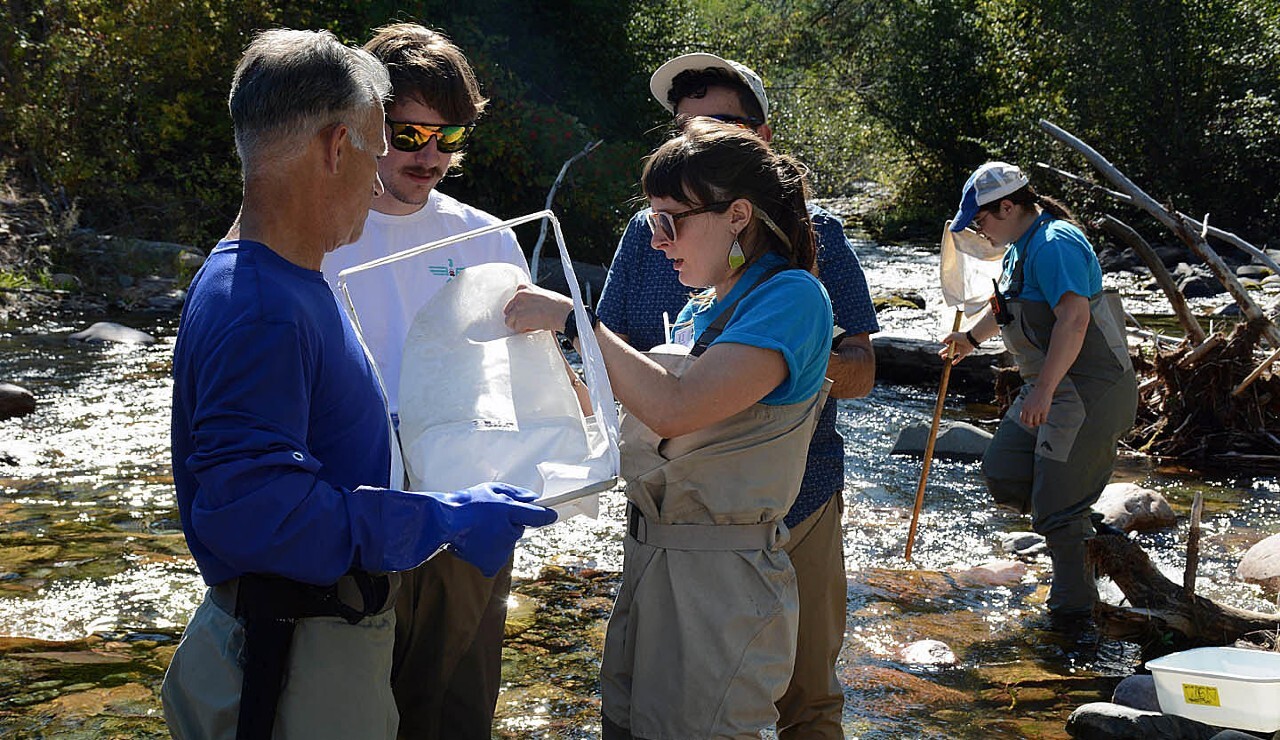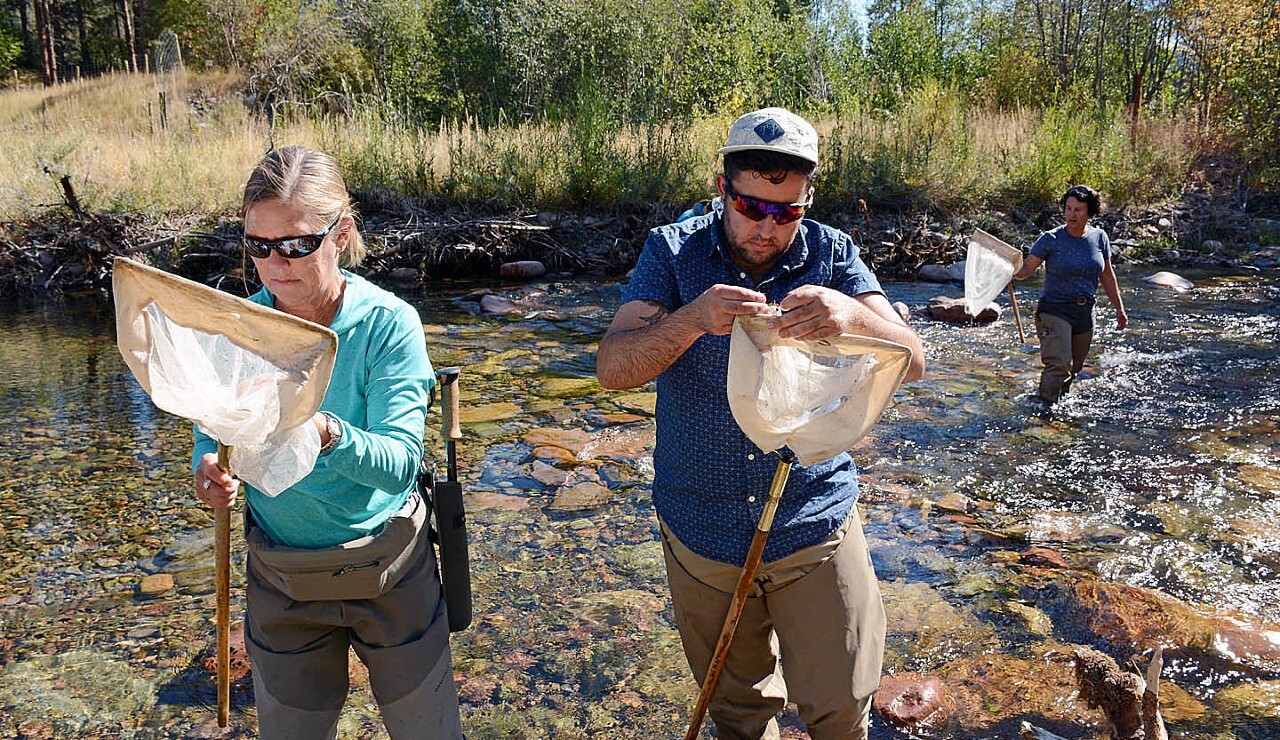MISSOULA - Two years after the removal of the dam, Rattlesnake Creek is recovering nicely and citizen scientists are documenting its recovery.
Volunteers and staff with the Watershed Education Network (WEN) took advantage of the unseasonably warm weather last week to wade into Rattlesnake Creek and collect aquatic insects in the area that once held the dam and its reservoir.
“This site is the reason we sample the Rattlesnake. We’re looking at the effect of the dam removal,” Stephanie Novak, WEN Stream Team coordinator told her four Stream Team volunteers.
The City of Missoula, with the help of Montana Trout Unlimited and Montana Fish, Wildlife & Parks, started demolishing the dam in late June 2020. The intent was to restore the stream to its pre-1904 state to improve fish and wildlife habitat since the city no longer depends on the water for its municipal supply.
Then they spent the rest of summer and early fall constructing the stream channel and surrounding riparian area - no small task.
Once the construction work was done, that could’ve been it. But many, including those with the Watershed Education Network, realized that the project presented an opportunity to document what happens to streams and the life they support when dams are removed.

WEN citizen scientists started collecting measurements of various stream characteristics in 2019, a year before the dam removal, to have a baseline for comparison after the dam was gone. Between the mouth and the dam, they assessed the extent of large woody debris, aquatic invertebrates and water quality indicators like sediment. The hope was that very little would change downstream of the dam.
The one place they obviously couldn’t collect measurements was the reservoir area. September 2020 wasn’t a good time to start because the stream channel that replaced the reservoir was still too new. So the WEN Stream Team conducted its first aquatic invertebrate count and channel cross-section measurements last September.
Biologists count and characterize aquatic bugs, which are the larvae of various flies, to assess the health of a stream.
“These aquatic insects are bio-indicators. So just by collecting bugs, we learn a whole lot about the stream that we wouldn’t find just by looking at other aspects,” Novak said. “If those other things are good, they combine to make good habitat for aquatic insects. We can get a nice bird’s-eye view of the entire habitat.”

It turns out that the new section of Rattlesnake Creek is doing well. Last year, the Stream Team found that mayflies, caddisflies and stoneflies had already moved into the new riffles, although most of the larvae were pretty small.
But those are the three types of insects that survive well only in cold, clean water so their presence was a good sign.
“They recolonized so fast. They had to move here from either upstream or downstream, probably downstream,” Novak said. “But we’re hoping to see a greater variety this year.”
Naturally, most volunteers have little or no experience identifying aquatic insects. But Novak said she can teach volunteers how to distinguish between mayflies, caddisflies and stoneflies within about 10 minutes.
That’s what she did on Wednesday with two volunteers. They collected the tiny bugs holding a kick net in the current as they shuffled along the stream bottom. Then using ice cube trays as holders, they isolated about 300 bugs just long enough to identify them before returning them to the stream.
To ensure the volunteers’ count is accurate, WEN also collects another group of bugs that they send to Missoula’s Rithron Associates lab where professionals conduct their assessment down to a finer detail.
Novak was pleased to say that last year’s volunteer count matched pretty closely with Rithron’s count. They’ll do the same thing this year to see if they can improve on their accuracy, Novak said.
WEN plans on conducting the same annual measurements for as long as it can recruit a stream team.
“After a big restoration project like this, you don’t see wide-scale habitat effects until five, 10 or 20 years after removal. So we’ll keep monitoring,” Novak said.
This is the kind of information - the ways that citizen scientists can be taught to gather important data - that interests Chris Jadallah, a Ph.D. student at the University of California - Davis.

“I’m studying if and how community-based and place-based approaches to science and monitoring, like citizen science, can support forms of learning that help foster more resilient riparian systems,” Jadallah said. “Some of our early findings are that these projects do support learning and literacy that relate to the health of the watershed.”
The UC-Davis Center for Community and Citizen Science had developed the manual that WEN used to get its Stream Team going and has been monitoring the progress of the Rattlesnake Creek restoration and the work the Stream Team has done. It will use its findings to help other communities carry out similar citizen science projects.
As part of that, Jadallah observed WEN’s citizen science groups all last summer and returned this past week to catch another glimpse before finishing his dissertation next spring. He’s also observed a few other dam removal sites, including Matilija Dam in southern California and the Elwah Dam in Washington, and the citizen scientists who are working on them.
“The thing with getting local citizens involved is they can bring their unique place-based knowledge and some of their skills to what they do here,” Jadallah said. “It’s particularly interesting to see how these projects impact youth and if it’s building their sense of place and stewardship attitudes. With some of the participants in WEN’s programs, we’re seeing how they get to know the creek in more intimate ways. And it’s from their experiences that they build a relationship with this place and hopefully care for it and work to protect it.”
Contact reporter Laura Lundquist at lundquist@missoulacurrent.com.





